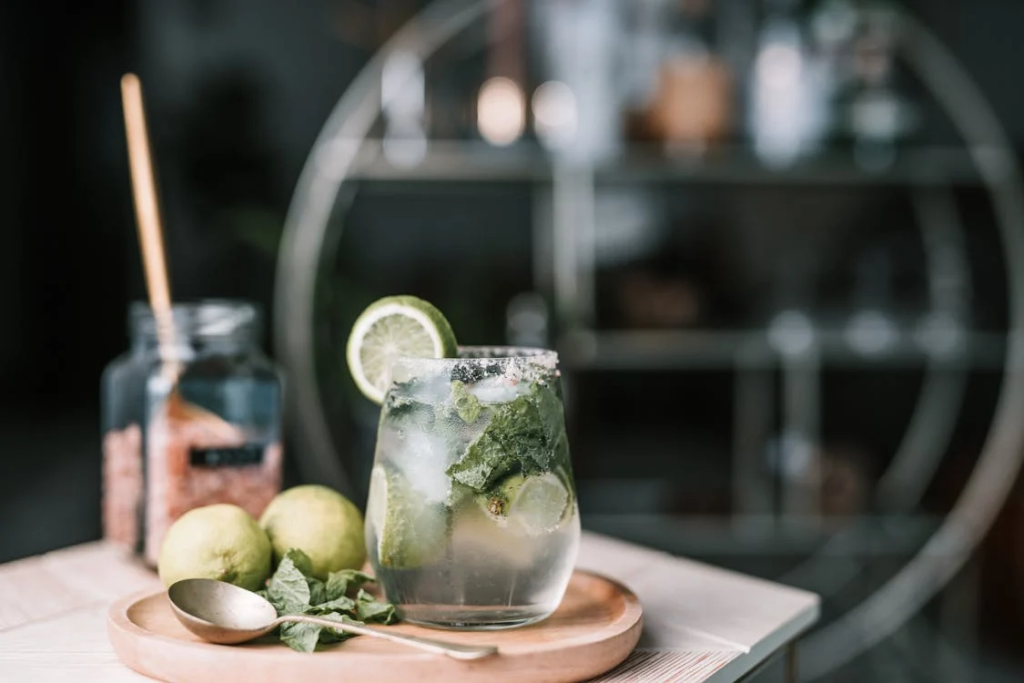Only a few drinks are as recognisable as the Mojito. Almost anyone who even has a passing interest in cocktails will likely know all the major ingredients: rum, mint, lime, soda, and sugar. But the exciting story of this refreshing beverage is, remarkably, unknown to even the vastest collective memory of cocktail geniuses and enthusiasts.
The History of the Mojito: A Classic (and Sugary) Cocktail
The history of the mojito, like that of other alcoholic drinks, is clouded by speculation and, maybe, a touch of booze. There are many stories about where this summer drink came from, but the one of British pirate Sir Francis Drake is among the most common.
Legend has it that when sailing close to Cuba, Sir Francis Drake and his crew fell ill with diarrhoea and scurvy. The Spaniards entered Havana in the 15th century, assuming the indigenous Cubans had the key to curing these illnesses.
After venturing to find the cure, some of the crew members brought back an unusual concoction of aguardiente, a Cuban rum from back then, sugarcane juice, mint leaves and lime juice. The islanders called this combination “El Draque”.
Another theory is that the drink was renamed “mojito” due to the presence of enslaved Africans in Cuba. Slaves often used the word “mojo,” which means “magic” or “spell-casting” in a more generic sense. The name developed further from that point forward to become its current form.
As with many stories blurred by the passage of time, variations of this legend and claims of different origins are common. Nonetheless, every account acknowledges that Cuba was the birthplace of the mojito. The modern classic cocktail owes its existence to the late-nineteenth-century creation of the Bacardi rum and bitters, which you can explore further on the mojito Havana-club website.
Global Popularity and Celebrity Endorsement
It was the Bacardi brand that was largely responsible for the Mojito’s meteoric rise to fame in the mid-1800s. Bacardi used the Mojito to highlight the variety of their rum, which helped them become one of the most famous rum makers.
Since then, the beverage has been popular among A-listers, with Ernest Hemingway being the most well-known. As a regular at La Bodeguita del Medio, Hemingway proudly displayed his famous “Mi mojito en La Bodeguita, mi daiquirí en El Floridita” phrase, which captures his ambience and reflects his time spent in Cuba. The drink also featured in the 2002 James Bond film “Die Another Day”. Bond used the drink to seduce the character Jinx, portrayed by Halle Berry.
The Modern Mojito
In the 21st century, the modest Mojito—a drink that had previously been reserved for Cuban beachside homes and farms—exploded into the cocktail world. Havana was soon a hotspot for affluent Americans, who flocked there to sip the Cuban version of the Mint Julep.
The Mojito is now a staple on most cocktail menus and is undeniably one of the world’s most popular drinks. Its widespread appeal comes from its simplicity, an irresistible blend of flavours that highlights the finest qualities of rum and fresh, seasonal ingredients.
Many bartenders and enthusiasts also enjoy experimenting with variations, like the Havana Club twist, which adds a unique flair to the classic.
Different Variations and Recipes
Whether you prefer it served in the classic style or infused with new ingredients to reflect the latest bar trends, this cocktail is versatile enough to do it all.
Classic Mojito Recipe
Muddle 2 teaspoons of sugar and 20 ml of lime juice in a sturdy (not delicate) glass to extract the oils from the mint leaves. After that, add soda water and top up the glass with crushed ice. Pour in 45 ml of white rum, then fill up with soda water, and mix well. If desired, add a lime wedge and more mint sprigs as garnishes.
Black Mojito Recipe
Black mojitos offer a simple twist on the classic by using spiced rum in place of white rum. The result is a bold, dark cocktail with a stormy appearance, perfect for sipping on a moody beach day.
The first step is to mix half of a lime, 30 ml of simple syrup, and ten mint leaves in a highball glass. Add ice to chill the mixture, then pour in 20 ml of white rum. Fill the glass halfway with club soda, and finish by adding 20 ml of spiced rum. Garnish with a fresh mint sprig.
Watermelon Mojito Recipe
Light, fruity, and refreshing, the watermelon mojito combines the sweet taste of watermelon with the crispness of cucumber.
To make a watermelon Mojito, combine 3–4 tablespoons of watermelon, a half-squeezed lime, cucumber slices, 20 ml of syrup, 45 ml of white rum, and mint leaves. Mash to mix. Afterwards, strain the mixture into an ice-filled highball glass. Add a little club soda and garnish with cucumber and watermelon slices to finish.
Southside Cocktail Recipe
The Southside elevates the mojito to a higher level of sophistication by using gin instead of rum. It’s perfect for your bar, summer wedding or other catered event.
To make this Mojito-inspired variation, add 60 ml of gin, freshly squeezed lemon juice, 20 ml of simple syrup, and ice to a cocktail shaker and shake well. Gently add mint leaves and give them a light twist to release their aroma. Discard the ice from a martini glass and strain the cocktail into it. Garnish with a fresh sprig of mint.
Conclusion
There you have it; the minty Mojito has moved from the stormy seas of the Caribbean to the most popular bars across the globe. The road from being a simple pirate drink to its current popularity has been long. Thanks to its remarkable ability to change and improve throughout the years, it has become the cocktail of choice for those seeking a revitalising taste of the past.



